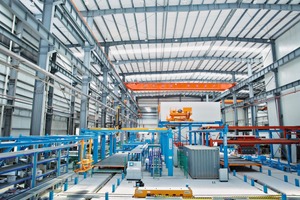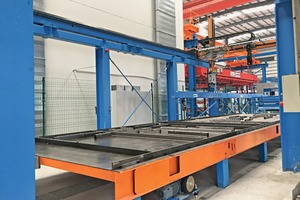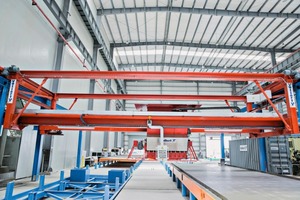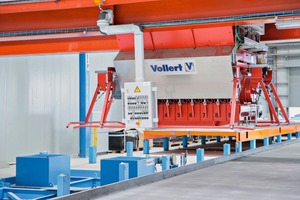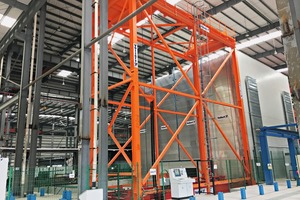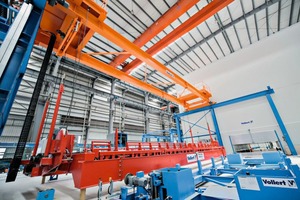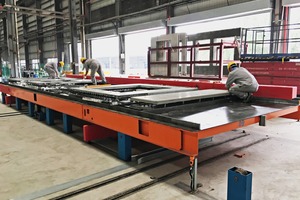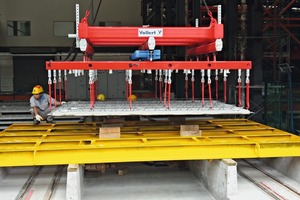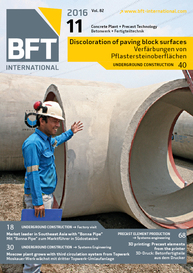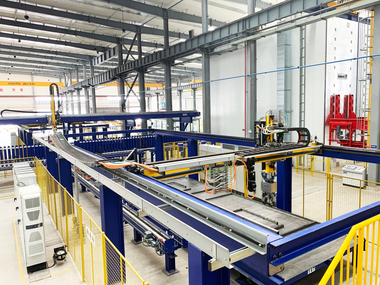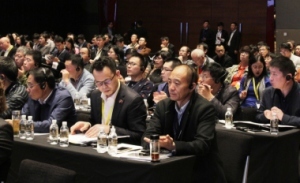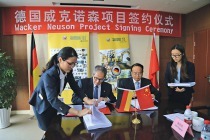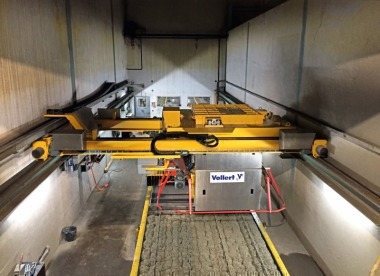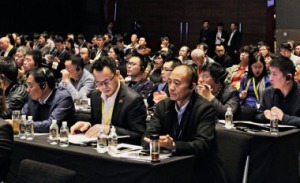Shanghai Baoye relies on advanced precast construction trechnology from Vollert
In these days of advanced precast architecture, with emphasis on such issues as environmental protection and conservation of resources and industrialized manufacturing methods, Chinese property developers such as the Shanghai Baoye Group invest in state-of-the-art machinery and plant engineering from Vollert.
Precast technology has a long, nearly 60-year, tradition. In the absence of state subsidies and due to the low quality of the precast products manufactured at the time, the boom found a sudden end as early as the 1990s. With advanced precast architecture, the important issues of environmental protection and conservation of resources, as well as new industrialized manufacturing methods, this situation has by now changed. The Chinese construction sector is experiencing ongoing growth. Chinese developers such as the Shanghai Baoye Group are investing in state-of-the-art machinery and plant engineering.
Chinese government and business rely on precast construction
The Chinese government and the national construction economy increasingly depend on precast construction technology to satisfy their urgent need for living and office space. In addition, many office buildings in China’s mega cities will have exceeded their service lives in the near future. They will have to be torn down and rebuilt, which will hardly be possible by conventional construction.
“Simply put, precast construction technology is an intelligent combination of raw materials put to optimal use and efficient precast plant engineering,” stated Hua Fan, General Manager of the Baoye Group, in describing the reasons why precast products in China have enormously gained in momentum and appreciation during the past two or three years. “Precast products, moreover, will reduce construction costs in China by 10 to 15 %.
“China is currently experiencing regular boom-time activity. But the major part of plant engineering by which production is now taking place in precast plants in China dates back to the 1980 s or earlier,” explains Björn Brandt, Vice President. “As we are doing now in close dialog with Shanghai Baoye Management, we advise our customers on current construction systems and technology standards and develop advanced turnkey precast production processes tailored to the needs of the customer. In these consultations we take account of important framework conditions, such as the climate, the job market, the cost of raw materials, and country-specific requirements, such as taxes and project regulations.”
Precast floor plates and double walls for mega construction projects
The 368-m Nanjing Golden Eagle Tiandi Square complex, the 330-m Zhuhai Center, and the headquarters tower of the Kuwait Central Bank are regarded as highlights of contemporary architecture. The Shanghai Baoye Group, one of the leading state construction companies, was the general contractor for these mega projects. “As pioneer and trendsetter, we constructed high-quality, high-rise building complexes already in the early 2000s throughout the entire Asian and Arabic hemisphere, also increasingly by means of new precast construction systems,” reported Hua Fan. “The intensive research on new construction systems and permanent investment in plant engineering are foundation pillars for the success of our company. For these reasons, we decided in mid-2015 to increase wall and floor manufacturing capacities by up 800,000 m² for executing increasingly larger and complex construction projects, primarily in the boom city of Shanghai, and to implement a completely new precast production line.”
Production takes place in a plant with a state-of-the-art pallet circuit system “Made in Germany,” from the German plant engineering company Vollert. Here, up to 75 pallets continuously traverse between the individual work stations and storage places.
High-performance robots for high-quality structural components
“Our claim is the manufacture of components of very high quality. In precast construction, that means walls and floors that are faultless regarding the geometry and dimensions of the components,” explains Hua Fan as he describes the requirements demanded at the very beginning of the project. Modern formwork systems and precise high-performance shuttering and demolding robots play a crucial role here. To assure effectiveness here, a Smart SET shuttering robot positions the form elements on the prepared pallet in the circuit – precisely and at high speed. This process takes place fully automatically and CAD/CAM-controlled, which likewise applies to the contour plot. Demolding via robot technology increases the service life of the form systems and reduces, in addition, the cycle time of every pallet. The automatic shuttering process is followed by several manual shuttering and reinforcement stations. In a standard line and a separate fast line, different complex components are split up into different lines. In this way, floor plates and the upper and lower shells for double walls can also be manufactured on parallel transport lines, depending on the construction project and capacity utilization. Downtimes and waiting times are minimized, and product output of the plant is notably increased.
“A state-of-the-art Smart Cast automatic concrete spreader places the precise concrete quantity where specified. The MES production control system activates the optimal traversing program for the subsequent casting process. Absolute path measurement and continuous weighing enable precise batching of the quantity to be cast. Subsequent compaction of the concrete takes place via a low-frequency, extremely low-noise Smart Compact vibration station. The result is an optimal upper shell in architectural concrete quality as well as optimal compaction of the loadbearing shell of the double wall with a higher degree of reinforcement. The eccentricities are differently synchronized, depending on the weight of the component. This enables optimal, circular shaking motion that generates little noise. Much stiffer concrete can also be processed by this method.
Highly efficient procedures in double-wall production and loading technique
For double wall production, a stacker crane takes the pre-cured upper shell out of the insulated, steam-heated shelf towers in the curing chamber and transfers it to state-of-the-art, suspended Vario Turn pallet-turning equipment. The shuttered pallet is locked in the pallet-turning equipment by means of a tensioning arm system. The height arrest of the tensioning arms is variable, so that even the insulation of the core-insulated double walls no longer obstructs secure bracing. Next, the first shell is turned by 180 °. After submersion of the lattice girders of the first shell into the fresh concrete in the second shell, synchronous shaking of both shells creates the double wall. Synchronous shaking without relative movement of the shells ensures high product quality and no segregation of the concrete near the reinforcement. The additional bracing together of both shells doubles the shaking energy, resulting in high surface quality, in addition to producing double walls of very high precision.
The loading technique for an annual production of up to 800,000 m² of wall and floor area also requires special attention. A Vario Tilt high-performance tilting station, fitted with a hydraulically moving supporting beam, picks up the double walls in horizontal position. The supporting beam drives against the fixed edge form and prevents the concrete elements from sliding during the tilting process. The loading process itself securely takes place by a pneumatic lifting beam from Nuspl. The lifting beam, fixed in place by special stabilizing equipment, takes up the double wall by means of lifting anchors and places it onto unloading racks. Lifting systems place the floor plates horizontally in stacks ready for transport. A Smart Logistic removal truck with a maximum lifting load of 32 t connects the loading area with the storage yard outside. From there, the loading frames are transported over a distance of 100 m to the final loading positions.
A milestone in the Chinese
construction industry
“With the new precast plant in Shanghai, where we have been manufacturing floor plates and double walls for our mega construction projects since mid-2016, we are setting a genuine milestone in terms of product quality and construction times for China and the entire Asian region,” says Björn Brandt. It is essential here that all processes and quality stages be continuously monitored and adhered to. The entire plant configuration as well as all of the storage procedures are centrally controlled by a modern SAA master computer. The intelligent MES production control system activates the individual work stations, generates the pallet loading plan, routes pallet transport, and administers the removal sequences and curing times.
The decision for Vollert as the supplier of the technology and plant engineering was carefully considered. “Although the investment costs at first glance appear to be higher than those of the Asian suppliers on the market. Ultimately it’s the productivity of the plant and the profitability figures that are decisive. In the new precast plant in Shanghai we produce up to 160 m² of walls and floors per hour,” explains Hua Fan.

